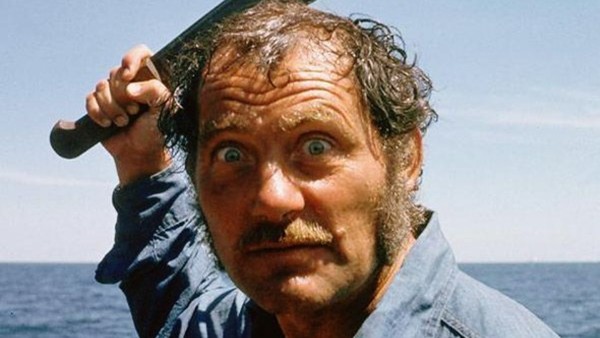The True Story Of Steven Spielberg's Lost Jaws Prequel
How the first Jaws sequel almost became a harrowing true story...

Cinematic history is filled with stories and speculation of "what could have been" and "what almost was." As revealed on a recent episode The Wrap's "Shoot This Now" podcast, the first sequel to one of the biggest movies of all time could've been something very, very different.
While modern blockbusters getting a slew of sequels, prequels, spin-offs, and inter-franchise crossovers may be common practice now (some might say to a fault), this wasn't always the case. In the mid-1970s, when such things were largely relegated to television, the unprecedented smash success of Steven Spielberg's Jaws saw studios scrambling to cash-in with their own "creature features" set at sea. Chief among these were JAWS producers Universal themselves, who immediately approached the director in hopes of a follow-up.
Spielberg agreed to do it, but not the simple rehash of the first Universal likely wanted, but rather a prequel expanding on Quint's (Robert Shaw) USS Indianapolis (written by uncredited Apocalypse Now scribe John Milius). The incident described occurred in June of 1945, when the surviving crew of a sunk US Navy cruiser found themselves menaced by roving sharks while adrift on open ocean, supposedly resulting in the most shark attacks on humans in recorded history. This would've seen Spielberg's first film set during World War II, a topic he would later explore extensively to much critical acclaim.
The "Shoot This Now" hosts referred to the pitch as "Saving Private Ryan, with sharks"; an immersive and in-depth retelling of the Indianapolis tragedy that would chronicle both the initial sinking of the ship and the subsequent survival scenario that ensued, the unmoored crew (including, of course, Quint) struggling as much against the elements, dehydration, and slow-spiral into delirium as the stalking bands of hungry sharks.
Had the film been made as described, it certainly would've been a much different experience than what was actually produced, a fun-but-familiar rehash of the first film with an injection of over-the-top vehicular destruction.
Of course, the Indianapolis incident would eventually see its day on the big screen in 2016, with the low-budget, Nicolas Cage-led vehicle USS Indianapolis: Men of Courage, which went direct-to-streaming in the United States following a limited Veterans' Day release. The film received generally lukewarm reviews, with many critics wondering why this story had taken so long to be adapted to film.